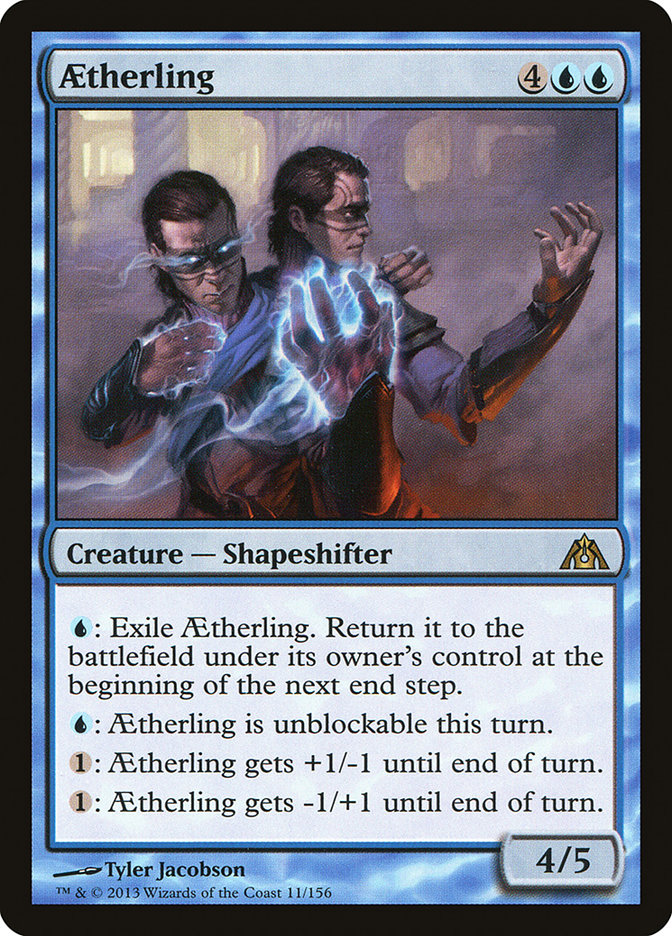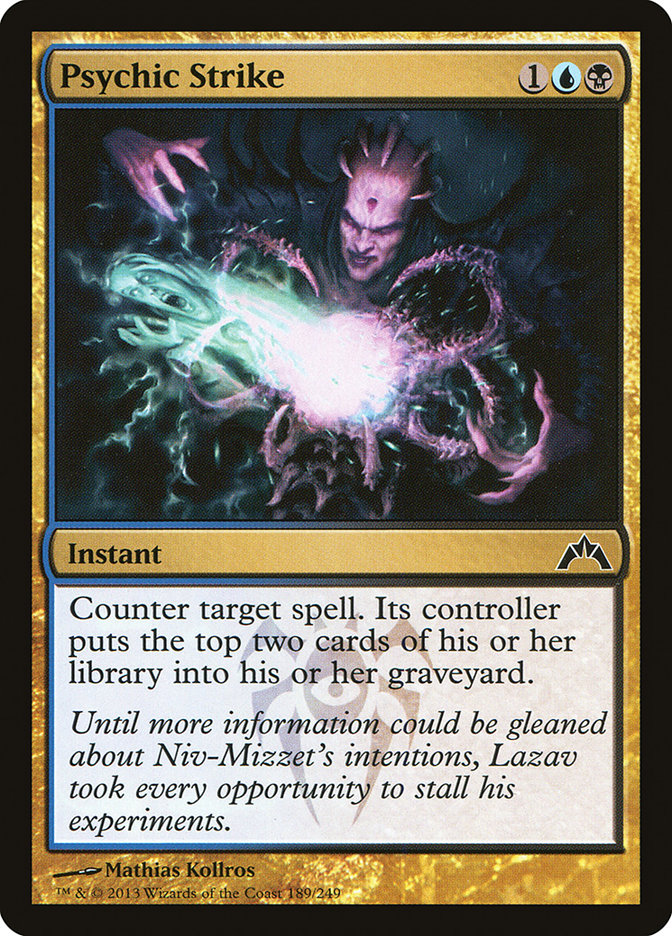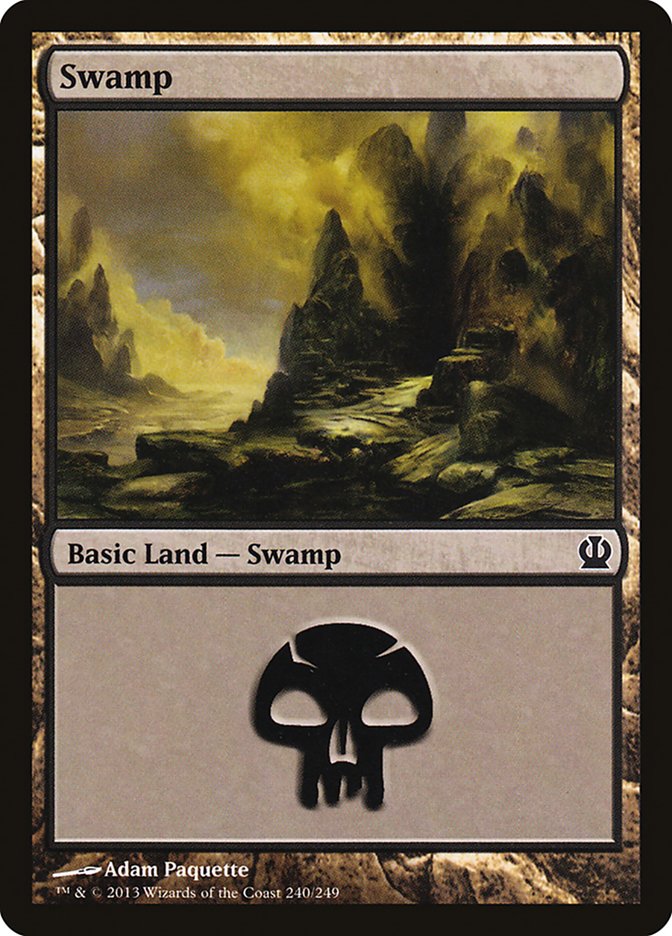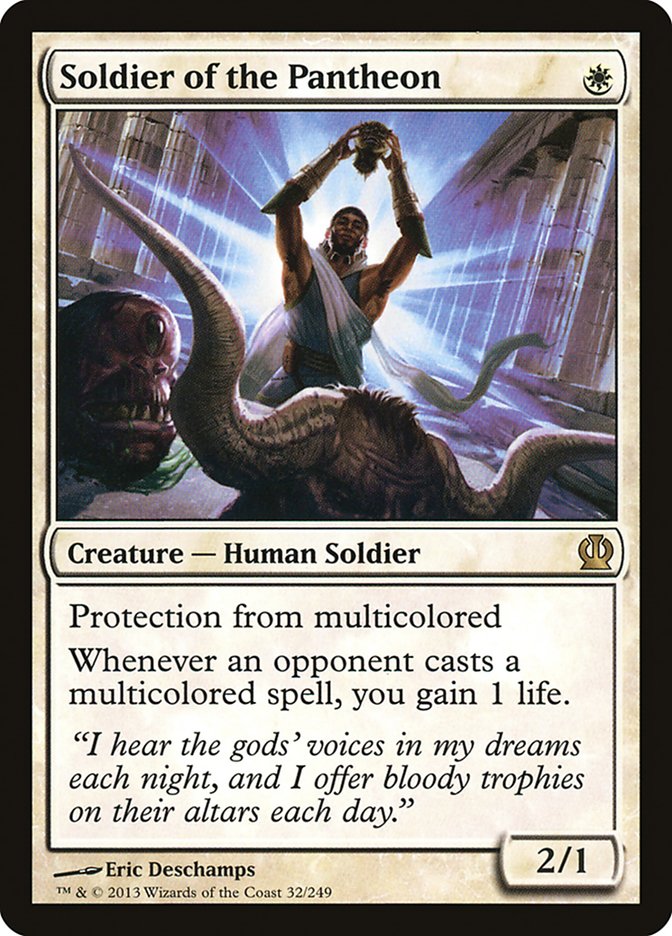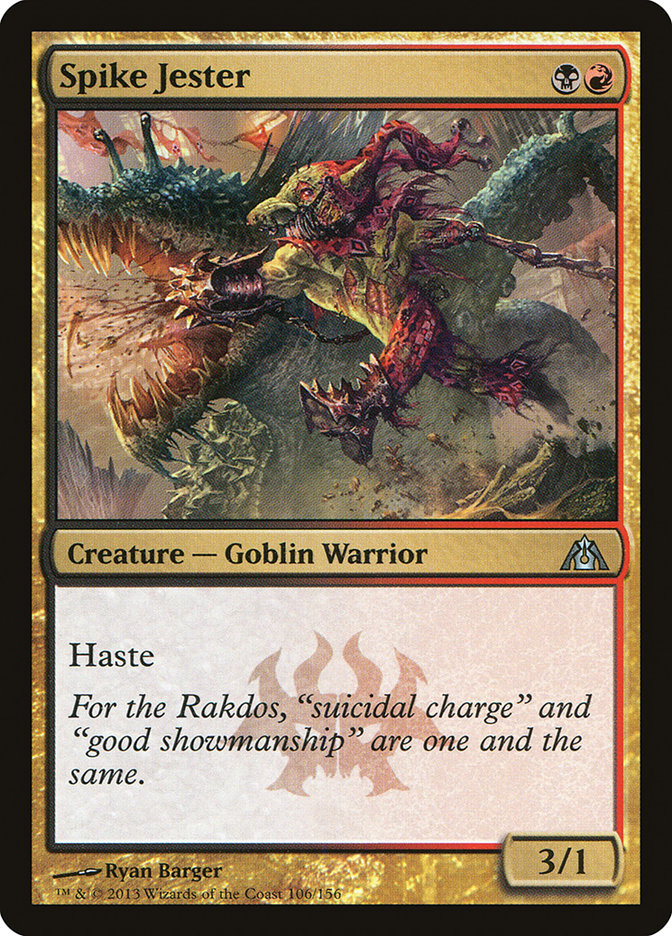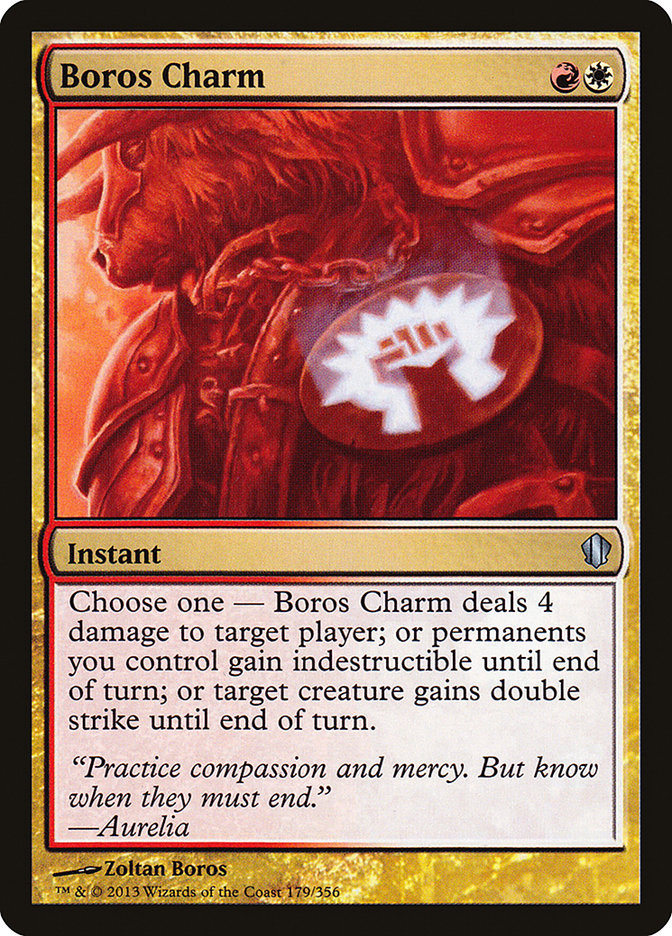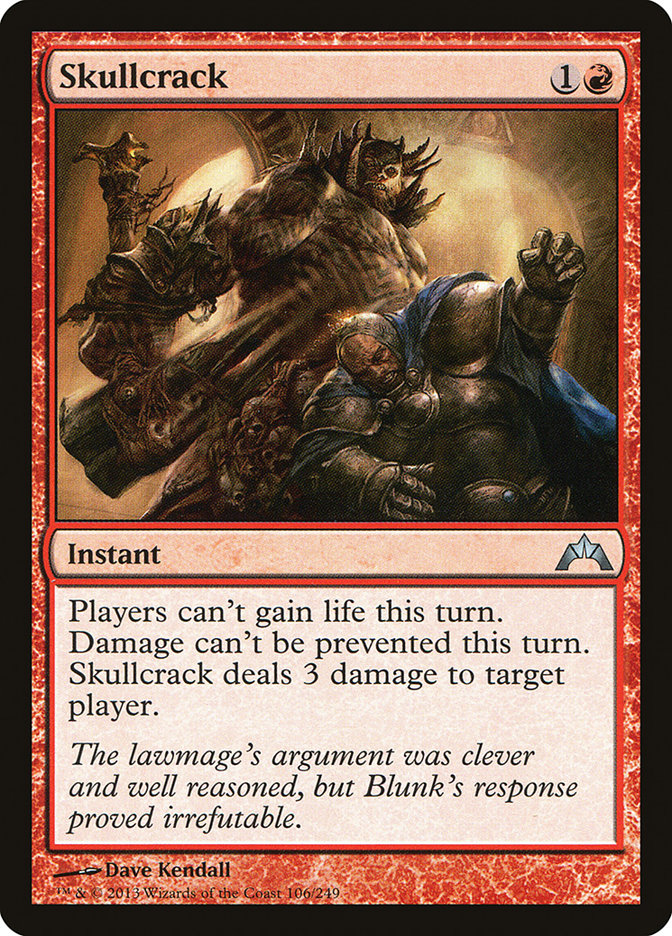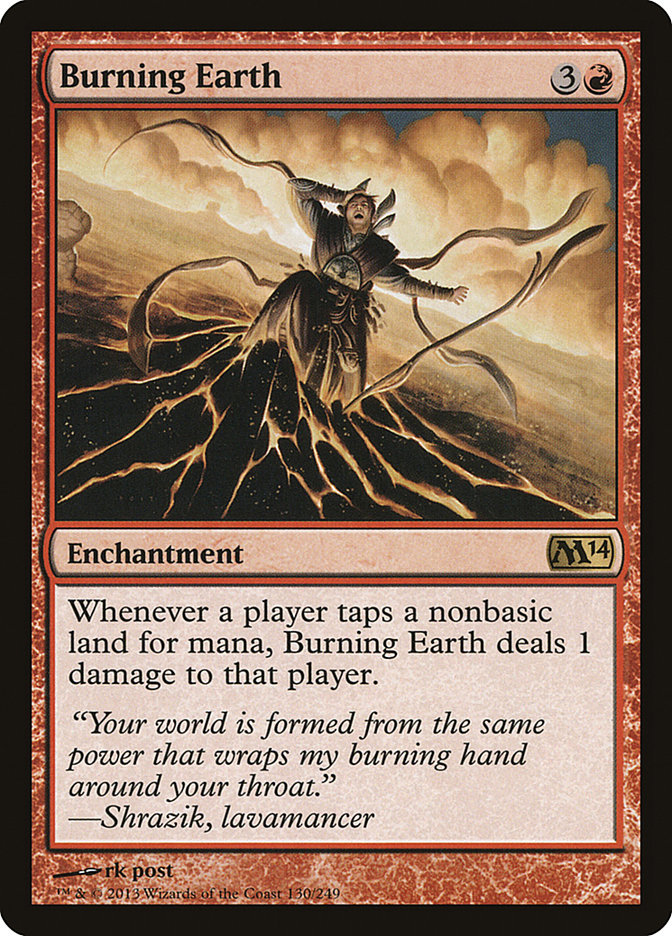The results from the weekend are in, and Esper Control appears to be the best deck in Standard. This is of course unsurprising when one considers that Esper is essentially a collection of the most powerful and most flexible spells in the format and the perfect home for the format’s absolute best card:
Sphinx’s Riddle: I just cast Revelation for seven; why haven’t you conceded yet?
Sphinx’s Revelation is so completely overpowering in the late game that it usually just ends the game on the spot when cast. What chance does an opponent have when a player draws six or more cards and goes back to fifteen life?
The only other cards that are as hopeless to play against in the late game as Rev are Aetherling and Elspeth, Sun’s Champion, and Esper has those as well!
When you make a lot of mana, you can afford to play some pretty nice spells.
The scry lands are so amazing.
Esper Control’s mana base does so much work for the deck by allowing it to basically dig for whatever it needs at any given time. The other thing that is pretty amazing is that while the deck basically plays almost as much mana as spells, because it plays a bunch of Sphinx’s Revelation and scry effects to dig to it in the late game, it essentially creates an interaction where all of those extra lands also draw a card and replace themselves.
Never has being flooded had so much upside!
The version of Esper that I played this past weekend had a few significant differences from the traditional Esper Control list that dominated Standard last weekend. I have been playing my list for a month now at various local tournaments, and in that time I haven’t failed to make a Top 8 yet. Needless to say, I have been very happy with how the deck has been working for me, so I would like to share it with all of you out there.
Unfortunately, I didn’t make Top 8 in Cincinnati, although I did manage to put up a respectable 45th place finish even after concede ding the last round to a friend who really needed the extra Pro Points to try to lock up Silver in the Pro Players Club for this season.
All in all, I was happy with my deck choice:
Creatures (1)
Planeswalkers (5)
Lands (27)
Spells (27)

The biggest innovation that is unique to my Esper Control list is that I moved in a more black-heavy direction in favor of playing the full four copies of Hero’s Downfall. The card is absolutely fantastic, and I love the instant speed aspect of it.
Do you want to kill Mutavault?
Do you want to calmly and casually dispose of a pesky Stormbreath Dragon or Mistcutter Hydra?
Do you want to murder their three-drop and jam Jace, Architect of Thought onto an easily defensible board?
Got an Obzedat, Ghost Council? No problem.
Sire of Insanity? So what.
If you would like to easily accomplish all of these awesome things on your opponent’s turn, Hero’s Downfall is a card you should consider playing!
If you’re not convinced that Hero’s Downfall is amazing simply because I’m singing its praises, let’s take a look at a couple of really important and common scenarios.
The first one is that you have three mana on turn 3. Your opponent casts a spell like Lifebane Zombie and you have a Syncopate, Psychic Strike, and a Hero’s Downfall in your hand. If you were playing the typical all Detention Sphere suite of removal, you would need to either play the counterspell right away or tap out on your next turn to answer it and thus render yourself unable to defend with permission on your opponent’s next turn if they cast a really spicy card. However, with Hero’s Downfall, you can just end of turn murder the Zombie, untap, and leave permission up for their next threat.
In the same scenario, if you have a Detention Sphere and a Jace, Architect of Thought, you would have a difficult decision to make about whether to spend your next turn answering the Zombie or playing a contested planeswalker, whereas with Hero’s Downfall you can harness a tempo advantage by killing the Lifebane Zombie, untapping, and playing Jace to safely draw cards on an open board.
Creating opportunities to cast Jace on an empty board is obviously a pretty huge advantage. The same sort of scenario comes up a lot in the Esper Control mirror matchup. Sometimes your opponent taps out for their Jace, Architect of Thought when you don’t have a counterspell. In these situations, you are often confronted with a lose/lose scenario of Detention Sphere their planeswalker on your next turn or play a Jace of your own.
Either play will put you behind in position. If you use your turn to Detention Sphere their Jace, you’ll be down a card, and they can have countermagic to stop you from resolving your own planeswalker on the next turn. If you play your Jace first, then they will be able to use their Jace for a second time and then Detention Sphere your Jace. All of these lead to situations where you will likely fall behind in one way or another.
Hero’s Downfall solves this problem. You just kill their Jace and play your own. Then they are the one that has to use their next turn to find an answer.
Hero’s Downfall creates a lot of opportunities to exploit positional advantage by letting you use your mana more efficiently than your opponent can, and since it’s an instant, it makes your counterspells even better since you can leave them up. And if they choose not to play anything? Kill their creature on their end step and have a counterspell up on their next turn.
If Hero’s Downfall is so great, how come people aren’t playing it?
The reason that people are not playing with Hero’s Downfall as much as they probably should be is that the 1BB mana cost is extremely taxing on a mana base that also wants to have 2UU for Jace, Architect and 1UWW for Supreme Verdict on turn 4.
I had to make a few sacrifices in order to get the powerful Hero’s Downfall in my deck, but all in all I believe it was well worth it. When we break down the ratios of dual land types in the deck, I max out with the full eight copies of lands that produce BW and only play six apiece of UW and UB.
The other concession that I felt necessary to play with Hero’s Downfall was to swap out my copies of Dissolve for Negate and Psychic Strike.
I was thinking to myself one day, "How can I squeeze more Gatecrash Limited playables into my tournament Esper Control deck?"
Speaking of Psychics, I’m currently en route back to Michigan with Grand Prix Cincinnati winner Kyle Boggemes (who also played Esper Control, albeit a different list without Psychic Strike), and he told me a pretty hilarious Psychic story.
At Michigan Regionals 2003, Kyle, then just a young crumb, was playing against an opponent who began to grow more and more distressed by Kyle calling out his plays before he made them. For instance, Kyle would cast Duress, his opponent would think for a moment, and Kyle would say "Envelop?" After several of these mysterious "predictions" came true, his opponent called a judge over:
"Judge! My opponent is calling out all my plays before I make them. I’m pretty sure he might be psychic. Is that legal?"
No joke. The guy was not being sarcastic and actually thought Kyle was psychic and was using his mind-reading powers to learn the contents of his hand.
No wonder Kyle just won the GP. It must be easy to make the right play when you psychically know what your opponent has in his or her hand all the time!
Opponent plays a Swamp and taps it. "Thoughtseize, eh?"
GET OUT OF MY HEAD! HOW DID YOU KNOW?
Being psychic is pretty fantastic, so let’s continue with the explanation for why Psychic Strike was in my deck this weekend.
The key to why I played Psychic Strike is that it’s essentially a Dissolve that can be cast with a Godless Shrine instead of a blue source. The downside is that it’s a slightly worse card than Dissolve, but the upside is that it enables the deck to also support consistently casting Hero’s Downfall.
Another thing that was sweet about Psychic Strike was that I would intentionally tap my mana leaving up Godless Shrine, Mutavault, and Watery Grave and my opponents would freely play out spells thinking "he can only have Syncopate for two, not Dissolve, because he doesn’t have UU available." Some of these players were pretty surprised (and a few annoyed) when I struck their spell useless with my very unique counterspell choice.
I have also gotten some pretty good value off of the mill effect in my matches with the deck so far. I’ve milled over a couple of Aetherling and Elixir of Immortality, which equated to wins, and I played against a Maze’s End deck and won the game by milling a one-of Gate!
All in all, I feel that the change was well worth the cost of playing a slightly worse Dissolve in order to consistently cast my spells. Also, having Hero’s Downfall in the mirror match, especially post-sideboard against players who bring in Revoke Existence and Glare of Heresy to kill Detention Sphere, is pretty sweet.
I played against a pretty large suite of decks at the Grand Prix and felt comfortable piloting my deck against all sorts of opposition.
Naya Aggro: 1-1
Esper Control: 1-1
B/W & Mono-Black Devotion, 4-1
G/B Dredge, 1-0
G/W Aggro, 1-0
I really like the matchup against black decks in general. Cards like Divination allow the Esper Control to really power through Duress and Thoughtseize post-sideboard. I did lose a close match to a black deck because, well, sometimes they just Thoughtseize and Pack Rat and there’s nothing you can do about it.
I had a pretty sweet psychic moment myself against a Mono-Black Devotion opponent on day 2 of the Grand Prix. I opened up a pretty good hand post-sideboard on the draw, which was immediately met with the tried and tested opening of Swamp and Thoughtseize. I sighed and muttered, "God, every time this happens to me," and sheepishly laid my hand out that featured my Elixir of Immortality. The Elixir was basically a mulligan to six, but because I sold my opponent on how upset I was about getting my Elixir snatched away, he snap took it.
Mind Control is a psychic ability, right?
Another thing I really like about my deck is that I was able to sideboard out Detention Sphere against all of the decks that sideboard in ways to kill it. It’s pretty sweet when people draw multiple copies of Revoke Existence and there are exactly zero targets for it in your entire deck. Detention Sphere is pretty great against most people in the first game when nobody can kill it, but when it becomes a liability, it’s time to formulate a new plan.
Although I didn’t play against G/R or Jund Monsters, I’m very confident that my deck matches up particularly well against them. With other U/W and Esper Control builds, I felt really miserable about playing post-sideboard games when my opponents were overloaded on Mistcutter Hydra, Stormbreath Dragon, and Sire of Insanity. Detention Sphere is absolutely horrible against these cards, and they have a ton of them. With a bunch of Hero’s Downfall, the dynamic changes pretty drastically, and I have lots of ways to deal with these threats. The same can be said of facing off against Obzedat, Ghost Council. I played against a lot of B/W Midrange decks, and I used Hero’s Downfall to kill roughly ten Obzedats this past weekend. Those Obzedat games would likely have been losses if I hadn’t played Hero’s Downfall.
Knowing that Esper Control is currently the jam and that mirror matches are an inevitability, I think I would make a few changes to my list, the most important of which would be to get a couple of copies of Thoughtseize in the maindeck as well as have access to the Nightveil Specter sideboard plan.
Creatures (1)
Planeswalkers (6)
Lands (27)
Spells (26)

I modeled my new sideboard after the one that Brian Braun-Duin innovated and with which Kyle Boggemes won the GP. I love the way that the sideboard provides the ability to flip the script and become much more threat heavy post-sideboard.
Thoughtseize effects are so important, especially in the mirror match, that I think it is probably necessary to have them in the maindeck. Being able to set up your big critical turn by seizing their best card to ensure things go according to plan is an invaluable tactic. Aside from being great in the mirror match, Thoughtseize is widely considered to be one of the best spells currently legal in Standard because of the flexibility, information, and tactical advantages it offers.
A few weeks ago I wrote that adding Deathrite Shaman to any Legacy deck likely makes it better, and the same can be said about Thoughtseize in Standard decks. The payoff for the price is an unbeatable value.
A few things to anticipate moving forward with regard to playing with and against Esper Control in the current Standard metagame:
If you want to beat Esper Control, the best way is to be more aggressive. Esper is full of really flexible spells that are great at answering a diverse range of threats. The problem is that the deck pays a price for this flexibility, and that price is that it’s slow and its spells are expensive.
Savannah Lions, AWAY!!!
When I’m playing Esper Control, the number one thing that I don’t want to see is a turn 1 Soldier of the Pantheon or Spike Jester (especially when I’m on the draw). Esper has an Achilles’ heel where if you’re playing cards that deal a lot of damage quickly, the control deck is unlikely to be able to match up their spells profitably.
If you can’t go long, then just burn ’em out.
Cheap haste creatures + Boros Charm is a huge issue for Esper Control. Esper is often put in a "must have Supreme Verdict on turn 4 to continue playing" position, and taking away their Supreme Verdict ends the game on the spot.
The basic principle is simple. Esper is a deck that wins by exploiting the fact that Sphinx’s Revelation is the best card in the format. If you can win the game before Sphinx’s Revelation becomes a factor, you have essentially taken their best weapon away from them.
Light their world on fire.
If this card ever goes unanswered against Esper Control, they cannot win without a five-drop lifelink creature on the board (which incidentally is one reason I like Kyle’s sideboard with four lifelinkers).
Also keep in mind that as players begin to build their control decks to become more inbred to fight other control decks that they will inevitably become softer to these types of aggressive strategies. And thus the metagame cycle of control –> aggro –> midrange –> repeat continues on.
So for this coming weekend, I would advise my readers to either:
- Play an Esper Control deck that beats Esper Control.
- Play a non-Esper Control deck that beats Esper Control.
Right now I would strongly advise players not to play decks that have bad Esper matchups because there will be more Esper decks floating around than ever before given this past weekend’s results.
Then again, who wants to cast a Spike Jester when they could be drawing a billion cards with Sphinx’s Revelation?
It’s just like what they sing in that classic song by Rare Earth:
"I just want to revelate."



